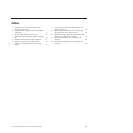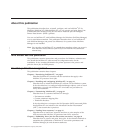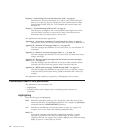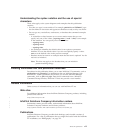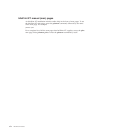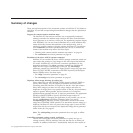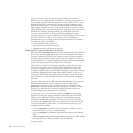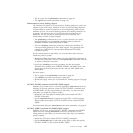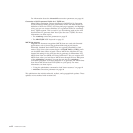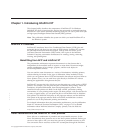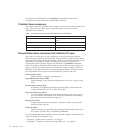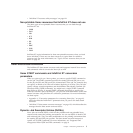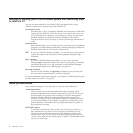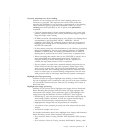the job to further verify the type of carriage controls. If it detects a
different type of carriage control, InfoPrint XT overrides the type that the
xcc parameter specifies. With Download for z/OS, InfoPrint XT can use a
download directive to convert ANSI carriage controls to machine code
before it converts the job. When the job contains both ANSI and machine
code carriage controls and you do not use Download for z/OS to transfer
online jobs, the AFP output that InfoPrint XT generates can be wrong if the
InfoPrint XT automatic carriage-control type verification returns an
incorrect result. InfoPrint XT now provides the xpcctest conversion
parameter that lets you prevent InfoPrint XT from reading the first records
of the job. InfoPrint XT then uses the value of the xcc parameter to
determine the type of carriage controls that the data for the job contains.
See these new and revised topics:
v -p download directive on page 76
v xcc conversion parameter on page 94
v xpcctest conversion parameter on page 99
Enhancements
for spacing characters in Xerox fonts
With the default xspacing=none conversion parameter and value, InfoPrint
XT converts spacing characters in Xerox fonts to Presentation Text Object
Content Architecture (PTOCA) text characters in the AFP that it creates. It
does the same for overlays that it creates from Xerox FRMs. You can now
instruct InfoPrint XT to create Relative Move Inline (RMI) structured fields
in the AFP output instead of the PTOCA text characters.
This function is useful if you need to manually correlate Xerox fonts to
AFP fonts rather than use the AFP fonts that InfoPrint XT creates. For
example, you might need to correlate a Xerox Magnetic Ink Character
Recognition (MICR) font to an AFP MICR font that is specifically tuned for
a particular Intelligent Printer Data Stream (IPDS) printer. In this case, a
code page conflict might arise if the spacing characters in the Xerox font
do not match any of the available characters in the manually correlated
AFP font.
You can avoid this type of conflict by instructing InfoPrint XT to generate
RMI structured fields in the AFP output or in any overlays that it
generates for Xerox fonts that you load with the new -b option of the
pdxtloadres command. If you manually correlate an AFP font to a Xerox
font that you load with the -b option, InfoPrint XT does not look for
corresponding spacing characters in the AFP font.
You can also use a new conversion parameter, xspcrmi, to control how
InfoPrint XT interprets spacing characters in the Xerox fonts that FILE
DJDEs specify. InfoPrint XT does not look for corresponding spacing
characters in a manually correlated AFP font for any Xerox font that it
loads when the xspcrmi=yes conversion parameter is in effect for the job.
For this enhancement to take effect, you must do these tasks after you
install the product update:
v Use the pdxtloadres command and its -b option to reload any Xerox
fonts for which you want to use this function.
v Use the pdxtloadres command to reload all forms that use the affected
fonts.
v Add the xspcrmi=yes conversion parameter to jobs that use FILE DJDEs
to specify fonts for which you want to use this function.
See
these topics:
xvi InfoPrint XT Guide




